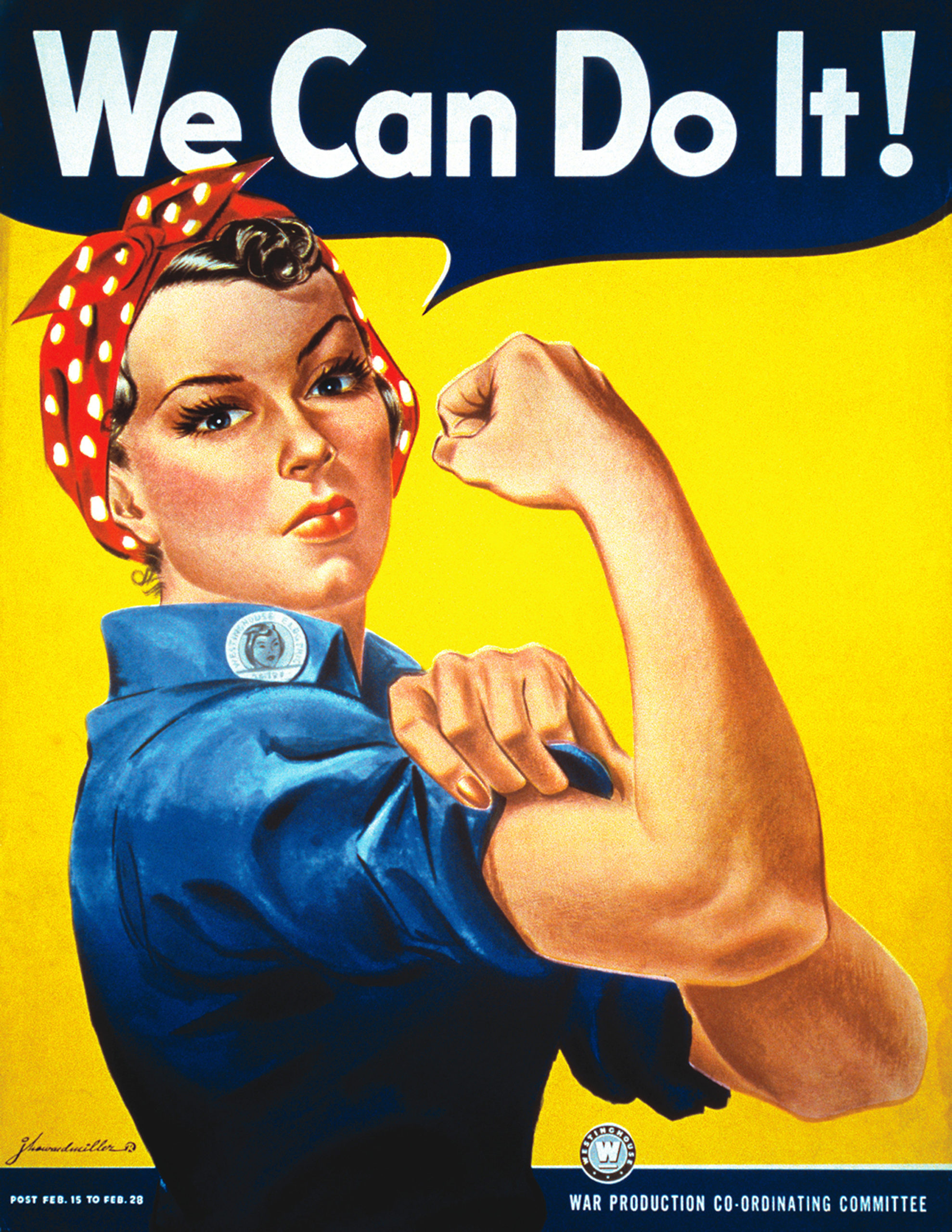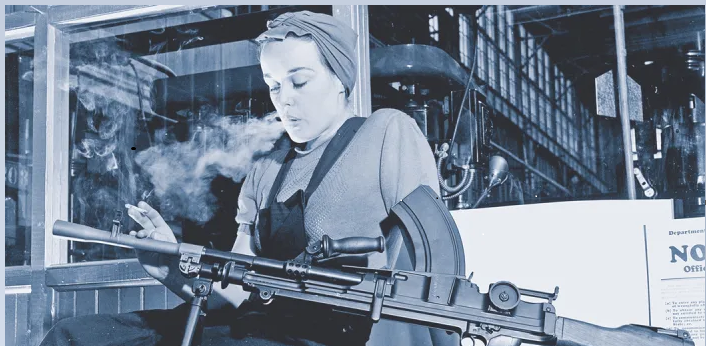
A few days ago, I read a great piece by Richard Bammer at The Reporter titled “At 100, a Rosie the Riveter still relishes life.” It is about Suisun City, Ca, resident Elizabeth Tate celebrating her 100th birthday, Tate, as more than one million civilian women did, worked in the U.S. defense industry during World War II. Tate worked at the Hunter’s Point Naval Shipyard, making, as she says, “tubs of bolts.”
Some readers may remember a January 2018 piece memorializing the death, at 96, of Naomi Parker Fraley, “the real Rosie the Riveter” and may thus be rightly confused.
As explained in the same piece, many historians, scholars and journalists have struggled with the identity of the “real” Rosie the Riveter for decades. She is the striking polka-dot-bandana-clad woman working at an industrial lathe at the Alameda Naval Air Station just after the Pearl Harbor attack, who quickly became the face behind J. Howard Miller’s iconic poster “We Can Do It!” A timeless image representing the millions of American women who entered shipyards, aircraft and armaments manufacturing plants in support of the nation’s World War II effort.
There have been a handful of women, who at one time or another have been “identified” as Rosie the Riveter.
Before looking at some of them, it is interesting to note that, even before the iconic Alameda Naval Air Station Rosie, the Canadians had their own “Rosie,” named “Ronnie, the Bren Gun Girl.”
“Ronnie’s” real name was Veronica Foster, a 19-year-old munitions worker at the John Inglis plant in Toronto where the famous Bren Light Machine Gun was produced. In 1941, she appeared in a series of publicity photos and posters that were meant to illustrate “the ‘typical’ life of a woman war worker” and to “boost morale and generate support for the war effort by encouraging women to serve by working in munitions factories.”
The most famous is a poster showing Foster in “her curve-hugging overalls and head scarf…smoking while seemingly admiring a recently constructed Bren Gun.” (Below)

National Film Board of Canada Photothèque / Library and Archives Canada/Public Domain
In 2020, Foster was honored with a Canadian postage stamp.
While the image of Ronnie may or may not have inspired the American Rosie, the iconic Rosie the Riveter “We Can Do It!” poster by J. Howard Miller was published a year later and displayed in Westinghouse Electric Corporation plants. It appeared again in the early 1980s and quickly became a symbol of patriotism for all and of self-reliance and determination for women.
The “We Can Do it!” poster appeared, with respect to time, in between a popular wartime song, “Rosie the Riveter,” written by Redd Evans and John Jacob Loeb, and the famous Norman Rockwell Saturday Evening Post cover depicting an overalls-clad woman “with a rivet gun on her lap and ‘Mein Kampf’ crushed gleefully underfoot.” The name Rosie is seen on her lunch pail.
Below is a video interview with Mary Doyle Keefe, the model for Rockwell’s painting. She was a 19-year-old Arlington, Vt., telephone operator when she posed for Rockwell. Doyle passed away at age 92 in 2015.
In addition to the Rosies above, during the seven decades after World War II, the following “Rosies the Riveter” have been suggested:
• Rosalind P. Walter from Long Island, New York. She was a riveter on Corsair fighter planes in San Diego, California, and also a night shift welder at the Sikorsky aircraft plant at Bridgeport, Connecticut, and believed to be the inspiration for the song by Evans and Loeb.
• Geraldine Hoff Doyle from Michigan. She worked in a Navy machine shop during the war and was believed for a time to have been the inspiration for the Westinghouse “We Can Do It!” poster.
• Rose Will Monroe, who worked as a riveter at the Willow Run B-24 bomber plant near Detroit, Michigan. She was also featured in a film about the war effort and promoting war bonds.
• Rosina “Rosie” Bonavita who worked for Convair in San Diego, California.
• Adeline Rose O’Malley, a riveter at Boeing’s Wichita plant.
But “suggestions” are just that and many historians, researchers and journalists have now concluded that “the most credible claim on Rosie’s legacy [comes] from Naomi Parker Fraley, who was photographed working in the machine shop at the Naval Air Station in Alameda, California…sporting a telltale polka-dotted bandana.” As mentioned before, Fraley passed away in January 2018 at age 96.
Fraley was born in Tulsa Oklahoma. After the attack on Pearl Harbor, the 20-year-old Fraley went to work at the machine shop at the Naval Air Station in Alameda, California, where her “duties included drilling, patching airplane wings and, fittingly, riveting…It was there that the Acme photographer captured Naomi Parker, her hair tied in a bandanna for safety, at her lathe,” according to the New York Times. The rest is now fascinating history.
CODA:
In a piece several years ago, I suggested that our military “are all heroes.” That generalization generated quite a bit of criticism – some understandable.
The sacrifices and contributions American women made during World War II – including “Rosie” Elizabeth Tate who just celebrated her 100th birthday – should be a beacon of pride and inspiration to all Americans: women and men, and there should be no doubt about it that yes, they were all Rosies.
















